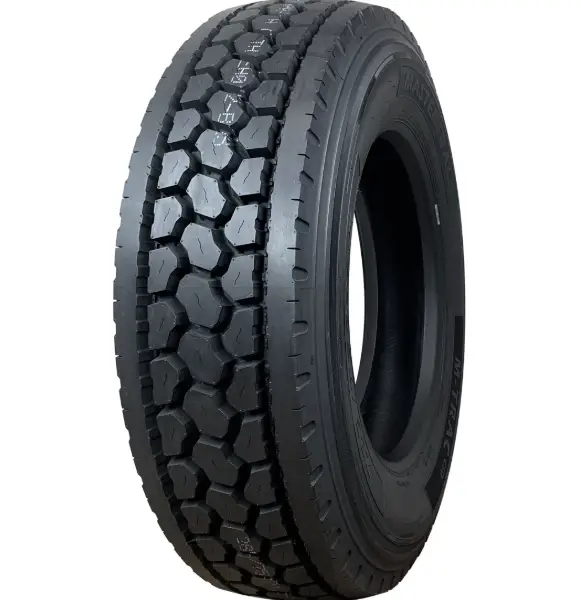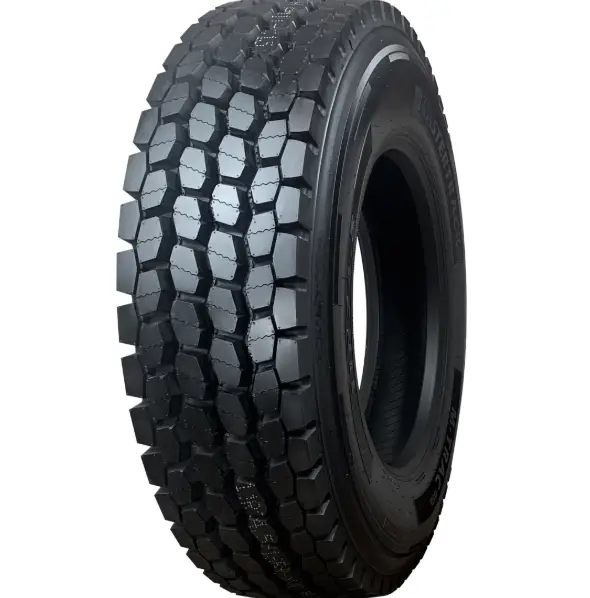Closed shoulder vs open shoulder tire: Closed shoulder tires offer stability and durability, while open shoulder tires provide better traction and water evacuation, making them ideal for off-road and wet conditions.
Tires are the foundation of a vehicle’s performance and safety. From the tread pattern to the rubber composition, every aspect of a tire is designed with a purpose. One often-overlooked aspect of tire design is the shoulder—the outermost edge of the tread. The shoulder of the tire plays a pivotal role in grip, handling, and how the tire responds to different driving conditions.
Closed shoulder and open shoulder tires are two of the most commonly used designs. Each has distinct advantages depending on the type of vehicle, the driving conditions, and the specific needs of the driver. But which one is right for you? Knowing the characteristics of each can help you choose the tire that will provide the best performance and longevity for your driving style.
Contents
What Are Closed Shoulder Tires?
A closed shoulder tire is designed with a continuous solid rib or tread around the outer edge of the tire. This design minimizes the voids (spaces between the tread blocks) on the shoulder, creating a larger contact patch between the tire and the road.
Advantages of a Closed Shoulder Tire
- Better Handling: Closed shoulder tires offer more stability, especially during high-speed cornering, because the solid edge helps distribute the pressure evenly.
- Durability: The solid structure helps reduce uneven wear on the edges of the tire, contributing to a longer lifespan.
- Quieter Ride: The continuous tread pattern generally results in less road noise compared to open shoulder designs.
Ideal Applications
Closed shoulder tires are ideal for:
- Highway Driving: These tires perform exceptionally well on dry, paved roads, providing stability and grip for high-speed driving.
- Heavy Load Vehicles: Trucks, buses, and other vehicles carrying heavy loads benefit from the durability and stability of closed shoulder tires.
- Dry and Moderate Conditions: These tires excel in dry conditions, offering better traction and a smoother, quieter ride.
Example Vehicles
- BMW 3 Series: Certain trims of the BMW 3 Series use closed shoulder tires, especially in models that prioritize comfort and stability on highways.
- Chevrolet Silverado: This full-sized pickup truck is another example where closed shoulder tires are often used for better performance on highways and during towing.

What Are Open Shoulder Tires?
An open shoulder tire features a tread pattern with larger voids or grooves along the outer edge of the tire. These wide grooves are designed to allow for more aggressive traction, especially in off-road and wet conditions.
Advantages of an Open Shoulder Tire:
- Superior Traction: The large grooves and spaces allow the tire to grip the road better, particularly in loose or uneven terrain.
- Better Water Evacuation: The wide shoulder grooves help channel water away from the tire, reducing the chances of hydroplaning in wet conditions.
- Improved Off-Road Performance: Open shoulder tires are excellent for off-road vehicles, providing extra traction on dirt, gravel, or snow-covered roads.
Ideal Applications
Open shoulder tires are best suited for:
- Off-Road and Rough Terrain: These tires are commonly found on vehicles that are driven in off-road conditions, such as trucks, SUVs, and agricultural vehicles.
- Wet and Slippery Conditions: Due to their open tread design, these tires offer better grip and water evacuation, making them ideal for driving in rainy or snowy weather.
- Aggressive Driving: For drivers who like to take their vehicles off the beaten path, open shoulder tires provide the performance needed for those conditions.
Example Vehicles
- Chevrolet Corvette: This sports car uses open shoulder tires in certain trims to provide better cornering and traction, especially when pushing the car to its limits.
- Toyota Land Cruiser: As an off-road vehicle, the Toyota Land Cruiser benefits from open shoulder tires that provide superior traction in rugged environments.

Closed Shoulder vs. Open Shoulder Tire: A Comparative Overview
A comparison table between closed shoulder and open shoulder tire are shown below –
| Feature | Closed Shoulder Tires | Open Shoulder Tires |
|---|---|---|
| Tread Design | Continuous solid rib | Large open grooves |
| Traction | Best on dry, paved roads | Superior on loose or wet surfaces |
| Durability | High, with even wear | Moderate, may wear unevenly |
| Noise Level | Generally quieter | Can be noisier |
| Hydroplaning Resistance | Lower due to fewer grooves | Higher due to wide channels |
| Best For | Highway and dry conditions | Off-road, wet, or snowy conditions |
Choosing the Right Tire for the Vehicle
When deciding between closed shoulder and open shoulder tires, it’s essential to consider your driving conditions and needs:
- For Highway Driving: Closed shoulder tires are a great choice for those who spend most of their time on dry, paved roads. They offer better fuel efficiency, smoother handling, and lower noise levels.
- For Off-Road or Mixed Terrain: Open shoulder tires are ideal for off-road vehicles or those who frequently drive in harsh conditions like mud, snow, or gravel. They provide superior traction and safety in wet conditions.
- For Wet or Snowy Roads: If you often drive in rainy or snowy conditions, open shoulder tires may be the better choice as they help evacuate water and reduce the risk of hydroplaning.
Frequently Asked Questions
Here are some FAQs about difference between closed shoulder and open shoulder tires –
1. What is the difference between closed and open shoulder tires?
Closed shoulder tires have a solid, continuous tread along the outer edge, providing better durability and stability. Open shoulder tires have large voids or grooves that improve traction, especially in off-road and wet conditions.
2. Can I use open shoulder tires on the highway?
Yes, open shoulder tires can be used on highways, but they tend to be noisier and may wear more quickly on paved roads compared to closed shoulder tires.
3. Are closed shoulder tires better for winter driving?
Closed shoulder tires are typically not designed for winter driving. For snow and ice, tires with deeper grooves and a more aggressive tread pattern (like open shoulder tires or winter tires) are recommended.
4. Do closed shoulder tires last longer than open shoulder tires?
Yes, closed shoulder tires tend to last longer because their solid shoulder design reduces uneven wear. Open shoulder tires are more prone to rapid wear, especially if used primarily on paved roads.
5. Can I mix closed and open shoulder tires on the same vehicle?
It’s not recommended to mix tire types on the same vehicle. For optimal performance, it’s best to use a consistent tire design across all four wheels.
Conclusion
Knowing the difference between closed shoulder and open shoulder tires is essential for making the right choice for your vehicle. Closed shoulder tires offer durability, comfort, and stability, making them ideal for highway driving.
Open shoulder tires, on the other hand, excel in off-road, wet, and challenging conditions, offering superior traction and performance. By considering your driving needs, you can select the tire type that best suits your vehicle, ensuring a safer, more efficient driving experience.